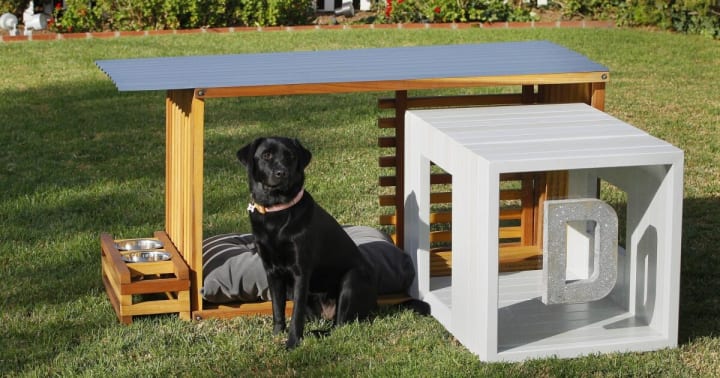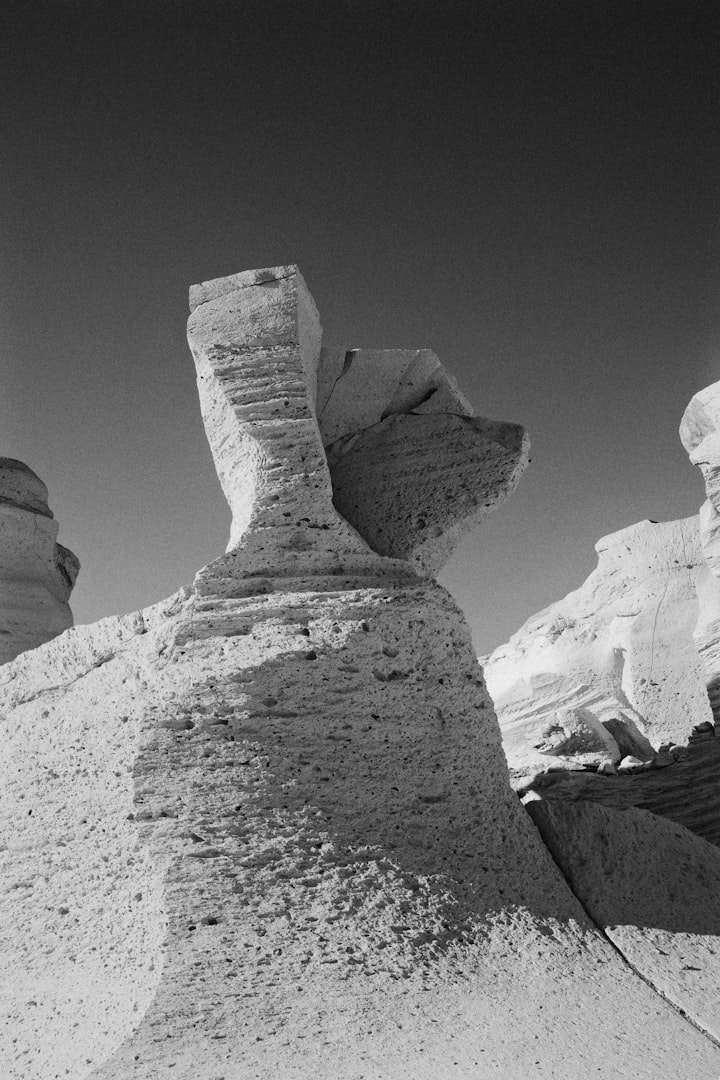
Introduction:
Welcome to the world of Barkitecture, where functional design meets the needs of our furry friends. As pet owners, we strive to provide the best care for our dogs, and a well-designed dog house is an essential part of that. In this article, we will explore the concept of Barkitecture, its history, benefits, design elements, popular styles, and considerations for both DIY enthusiasts and those seeking professional help. So let's dive in and discover how you can create the perfect home for your beloved canine companion.
What is Barkitecture?
Barkitecture is the art and science of designing and building structures specifically tailored to meet the needs of dogs. It goes beyond a simple dog house and focuses on creating a comfortable, secure, and aesthetically pleasing environment for our furry friends. Barkitecture takes into account factors such as the dog's size, breed, climate, and the owner's preferences to design a space that provides shelter, promotes health and wellness, and enhances the bond between dogs and their owners.
The History of Barkitecture
Origins of Barkitecture
The concept of Barkitecture has been around for centuries. In ancient times, humans realized the importance of providing shelter for their canine companions. From simple caves and huts to more elaborate structures, our ancestors recognized the need to protect their dogs from harsh weather conditions and predators. Over time, as dogs became more domesticated, the design and construction of dog houses evolved to cater to their specific needs.

Famous Examples of Barkitecture
Throughout history, there have been remarkable examples of Barkitecture that have stood the test of time. One such example is the "Hundehütte" in Germany, a small, cozy dog house designed with traditional architectural elements. Another famous Barkitecture example is the "Dog Bark Park Inn" in Idaho, USA, which is shaped like a giant beagle and serves as a unique bed and breakfast for both humans and dogs.
These iconic structures showcase the creativity and love of dog owners in designing spaces that are both functional and visually appealing for their four-legged companions.
Benefits of Barkitecture for Dogs and Owners
Barkitecture offers numerous benefits for both dogs and their owners. Let's explore some of the key advantages:
Comfort and Security
A well-designed dog house provides a cozy and secure space for your furry friend. It offers protection from extreme temperatures, rain, wind, and other elements, ensuring that your dog stays comfortable and safe throughout the year. With insulation and proper ventilation, Barkitecture creates an environment that promotes relaxation and reduces stress for your canine companion.
Health and Wellness
Barkitecture plays a vital role in maintaining your dog's health and well-being. A well-ventilated and properly sized dog house helps regulate temperature, preventing overheating or hypothermia. Additionally, elevated flooring and adequate drainage help keep the interior dry, preventing the growth of mould or mildew that could negatively impact your dog's health.

Bonding and Interaction
A thoughtfully designed dog house can enhance the bond between you and your dog. By creating a dedicated space for your furry friend within your property, you encourage them to feel more connected to their human family. It becomes a place where you can spend quality time together, whether it's playing, relaxing, or simply enjoying each other's company.
Elements of a Barkitecture Design
When it comes to designing Barkitecture, several key elements contribute to creating a functional and appealing dog house. Let's explore these elements:
Size and Layout
The size and layout of a dog house should correspond to the size and breed of your dog. It should be spacious enough for them to move comfortably and lie down without restrictions. Consider the height of the entrance, ensuring that your dog can enter and exit without difficulty. Additionally, incorporating separate areas for sleeping and lounging can provide a more versatile and enjoyable space for your canine companion.

Materials and Construction
Choosing the right materials for Barkitecture is essential for durability and aesthetics. Opt for high-quality, weather-resistant materials such as cedar, plastic, or metal that can withstand the elements. The construction should be sturdy, providing stability and protection against strong winds or potential accidents. It's also important to consider non-toxic materials to ensure the safety of your dog.
Functional Features
Adding functional features to the Barkitecture design can enhance its usability. Consider features like removable roofs for easy cleaning, elevated flooring to prevent moisture accumulation and windows or openings for proper ventilation. Incorporating a porch or shaded area can offer a comfortable spot for your dog to relax outdoors while being protected from the sun or rain.
Popular Barkitecture Styles
Barkitecture comes in various styles, allowing dog owners to choose designs that complement their own aesthetic preferences. Let's explore some popular Barkitecture styles:
Traditional Barkitecture
Traditional Barkitecture embraces classic architectural elements and designs, often resembling miniature versions of human houses. These designs may feature pitched roofs, decorative details, and traditional materials such as wood or brick. Traditional Barkitecture adds a touch of charm and nostalgia to your outdoor space while providing a cozy haven for your dog.

Modern and Contemporary Barkitecture
For those with a more minimalist taste, modern and contemporary Barkitecture offers sleek and clean designs. These designs focus on simplicity, often featuring geometric shapes, clean lines, and modern materials such as metal and glass. Modern Barkitecture blends seamlessly with contemporary outdoor spaces and brings a touch of modernity to your dog's living quarters.
Eclectic and Creative Barkitecture
For adventurous and imaginative dog owners, eclectic and creative Barkitecture allows for unique and unconventional designs. From whimsical shapes and vibrant colors to unconventional materials and artistic details, this style of Barkitecture adds a playful and artistic touch to your dog's space. It's an opportunity to showcase your creativity and create a one-of-a-kind dog house that stands out.
Factors to Consider when Designing Barkitecture
When designing Barkitecture, several factors should be taken into consideration to ensure the comfort and functionality of the dog house. Let's explore these factors:
Climate and Environment
Consider the climate and environment in which the dog house will be located. If you live in an area with extreme temperatures, you may need to incorporate insulation or heating and cooling systems. For humid climates, proper ventilation is crucial to prevent humidity buildup. Understanding your local weather conditions will help you design a dog house that provides optimal comfort for your furry friend.
Dog's Size and Breed
The size and breed of your dog play a significant role in determining the dimensions and layout of the dog house. Larger breeds will require more space, while smaller breeds may prefer a cozy and compact design. Additionally, consider any specific needs or behaviors of your dog. For example, if your dog tends to chew on things, you may need to use more durable materials or incorporate chew-resistant features.

Owner's Preferences and Lifestyle
The dog house should complement the overall aesthetic of your outdoor space and reflect your personal style. Consider the architectural style of your home and choose a design that harmonizes with it. Additionally, think about how the dog house will fit into your lifestyle. If you travel frequently or have limited time for maintenance, opting for low-maintenance materials and design features can make your life easier.
DIY Barkitecture: Building Your Own Dog House
For the handy and creative individuals, building your own dog house can be a rewarding project. Here's a step-by-step guide to help you get started:
1. Planning and Measuring
Begin by planning the design and size of your dog house. Take accurate measurements of your dog to determine the appropriate dimensions. Consider the desired features and layout, such as windows, doors, and a porch. Sketch out your design and create a list of materials and tools you'll need.
2. Choosing Materials and Tools
Select high-quality materials that are suitable for your climate and provide adequate insulation and durability. Common materials include wood, plastic, and metal. Ensure you have the necessary tools, such as a saw, drill, hammer, and screws, to complete the construction.
3. Construction Tips and Techniques
Follow your design plan and cut the materials to the correct dimensions. Assemble the structure, starting with the base and walls. Pay attention to proper reinforcement and stability. Add the roof, ensuring it's securely attached and provides sufficient protection from the elements. Finish the construction by adding any desired features or decorative elements.
Hiring a Professional Barkitect
If DIY isn't your cup of tea or you prefer a more specialized approach, hiring a professional barkitect is a great option. Here are some considerations when working with a professional:
Benefits of Professional Design
A professional barkitect brings expertise and experience to the table. They can provide innovative design solutions, ensure structural integrity, and incorporate unique features that enhance the functionality and aesthetics of the dog house. Additionally, they can take into account any specific requirements or challenges presented by your dog or property.
Finding the Right Barkitect
When selecting a barkitect, do thorough research and check their portfolio and client reviews. Look for a barkitect who specializes in designing Barkitecture and has a track record of successful projects. Consult with multiple barkitects to find the one who understands your vision and has the necessary expertise to bring it to life.
Working with a Barkitect
Communication is key when working with a barkitect. Clearly articulate your expectations, preferences, and budget. Collaborate closely with the barkitect throughout the design process, providing feedback and discussing any modifications or adjustments. Regular communication will ensure that the final result align with your vision and meets your dog's needs.
Tips for Maintaining Barkitecture
Once you have built or installed your Barkitecture, proper maintenance is essential to ensure its longevity and functionality. Here are some tips for maintaining your dog house:
Regular Cleaning and Maintenance
Regularly clean the interior and exterior of the dog house to keep it free from dirt, debris, and bacteria. Remove any bedding or cushions and wash them regularly. Check for signs of wear and tear, such as loose screws or damaged materials, and make necessary repairs promptly.
Repairs and Upgrades
Inspect the dog house periodically for any damage or signs of deterioration. Repair or replace damaged parts to maintain the structural integrity. Additionally, consider upgrading the dog house as your dog's needs change. For example, you may need to add insulation or install a dog door for easier access.
Seasonal Preparations
Prepare the dog house for different seasons. In hot weather, ensure proper ventilation and provide shade to keep the interior cool. In cold weather, add insulation and provide warm bedding. Consider using weatherproofing materials to protect the dog house from rain, snow, and wind.
The Future of Barkitecture
Barkitecture continues to evolve and adapt to meet the changing needs and preferences of dog owners. Here are some trends that shape the future of Barkitecture:
Sustainable and Eco-friendly Designs
As sustainability becomes a priority, Barkitecture is embracing eco-friendly materials and energy-efficient features. Designs that incorporate recycled materials, green roofs, and solar-powered elements are gaining popularity. These sustainable practices not only benefit the environment but also contribute to the health and well-being of our dogs.
Technological Advancements
Technology is making its way into Barkitecture. Smart dog houses equipped with temperature and humidity sensors, automatic feeders, and remote-controlled features are becoming more prevalent. These advancements enhance the comfort and convenience of both dogs and owners, allowing for better monitoring and control of the dog's environment.
Inclusive and Accessible Barkitecture
Inclusivity is an important aspect of Barkitecture design. Considerations are being made to accommodate dogs with disabilities or special needs. Features such as ramps, non-slip surfaces, and spacious layouts are being incorporated to ensure accessibility and comfort for all dogs.
Conclusion
Barkitecture goes beyond a simple dog house; it is a thoughtful and creative approach to providing a comfortable and engaging space for our beloved canine companions. By understanding the principles of Barkitecture and considering factors such as size, materials, and design, we can create an environment that promotes the well-being and happiness of our dogs.
Whether you choose to build your own dog house or work with a professional barkitect, the end result will be a unique and tailored space that both you and your furry friend will appreciate.
About the Creator
Navanithe
I am an enthusiastic, self-motivated, reliable, responsible, and hard-working person. I am a mature team worker and am adaptable to all challenging situations. I am able to work well both in a team environment and on my own initiative.






Comments
There are no comments for this story
Be the first to respond and start the conversation.